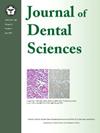Distinctive salivary oral microbiome in patients with burning mouth syndrome depending on pain intensity compared to healthy subjects
IF 3.4
3区 医学
Q1 DENTISTRY, ORAL SURGERY & MEDICINE
引用次数: 0
Abstract
Background/purpose
Burning moouth syndrome (BMS) is a chronic pain condition similar to neuropathic pain. It is characterized by a persistent burning sensation in the oral cavity. Despite the lack of clarity regarding the etiology of BMS, recent studies have reported an association between the gut microbiome and neuropathic pain. However, few studies have investigated the association between the oral microbiome and orofacial pain, such as BMS. This study aimed to compare the oral microbial profiles of healthy controls (HC) and patients with BMS.
Materials and methods
The BMS group was further divided into BMS_low and BMS_high groups according to pain intensity. A total of 60 patients with BMS (BMS_low, n = 16; BMS_high, n = 44) and 30 HC provided saliva samples, which were sequenced and analyzed for the V1–V2 region of the 16S rRNA gene.
Results
The alpha diversity was similar among the three groups. However, a significant difference in the distribution of microbiome composition was observed between BMS_high and HC, as revealed by the Bray–Curtis distance analysis (P < 0.01). At the genus level, Prevotella and Alloprevotella were the most abundant genera in the BMS group. Compared to HC, BMS_high exhibited a relatively higher abundance of bacterial species. Some bacteria, including Prevotella spp., exhibit an increasing pattern with subjective pain intensity.
Conclusion
These results suggest the potential involvement of oral microbiota in BMS pathogenesis. Additionally, variations in the microbiome may occur not only in the presence or absence of pain, but also with pain severity.
与健康受试者相比,灼口综合征患者的唾液口腔微生物群因疼痛强度不同而各具特色
背景/目的灼口综合征(BMS)是一种类似神经性疼痛的慢性疼痛。它的特点是口腔中有持续的烧灼感。尽管BMS的病因尚不清楚,但最近的研究报道了肠道微生物群与神经性疼痛之间的关联。然而,很少有研究调查口腔微生物组与口腔面部疼痛(如BMS)之间的关系。本研究旨在比较健康对照(HC)和BMS患者的口腔微生物谱。材料与方法根据疼痛强度将BMS组分为BMS_low组和BMS_high组。BMS患者共60例(BMS_low, n = 16;BMS_high, n = 44)和30 HC提供唾液样本,对16S rRNA基因V1-V2区进行测序和分析。结果三组间α多样性相似。然而,Bray-Curtis距离分析(P <;0.01)。在属水平上,普雷沃氏菌和异普雷沃氏菌是BMS组中最丰富的属。与HC相比,BMS_high显示出相对较高的细菌丰度。一些细菌,包括普雷沃氏菌,表现出主观疼痛强度增加的模式。结论口腔微生物群可能参与BMS的发病机制。此外,微生物组的变化不仅可能在疼痛存在或不存在时发生,而且可能与疼痛严重程度有关。
本文章由计算机程序翻译,如有差异,请以英文原文为准。
求助全文
约1分钟内获得全文
求助全文
来源期刊

Journal of Dental Sciences
医学-牙科与口腔外科
CiteScore
5.10
自引率
14.30%
发文量
348
审稿时长
6 days
期刊介绍:
he Journal of Dental Sciences (JDS), published quarterly, is the official and open access publication of the Association for Dental Sciences of the Republic of China (ADS-ROC). The precedent journal of the JDS is the Chinese Dental Journal (CDJ) which had already been covered by MEDLINE in 1988. As the CDJ continued to prove its importance in the region, the ADS-ROC decided to move to the international community by publishing an English journal. Hence, the birth of the JDS in 2006. The JDS is indexed in the SCI Expanded since 2008. It is also indexed in Scopus, and EMCare, ScienceDirect, SIIC Data Bases.
The topics covered by the JDS include all fields of basic and clinical dentistry. Some manuscripts focusing on the study of certain endemic diseases such as dental caries and periodontal diseases in particular regions of any country as well as oral pre-cancers, oral cancers, and oral submucous fibrosis related to betel nut chewing habit are also considered for publication. Besides, the JDS also publishes articles about the efficacy of a new treatment modality on oral verrucous hyperplasia or early oral squamous cell carcinoma.
 求助内容:
求助内容: 应助结果提醒方式:
应助结果提醒方式:


